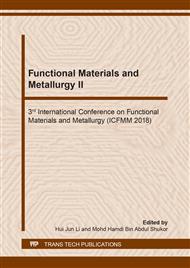p.45
p.51
p.59
p.65
p.71
p.79
p.86
p.92
p.98
Study on the Optimization of Process Parameters for Absorbable Bone Plate with In-Mold Heat Treatment
Abstract:
Titanium alloy & stainless steel are major materials for bone fracture fixation such as bone screws and plates in today's medical devices. However, the fixation devices made of metal not only have the risk of metal ion release to cause human allergies, but they also need to be removed by a second surgical operation making pain and the risk of the patient’s wound infection after the bone fracture healing. The biodegradable Polylactic Acid (PLA) bone screws & bone plates have the great advantage of not needing a second operation, but their insufficient strengths make them not be widely used in the current bone fracture fixation. In the study, we use PLA as the matrix and in-mod heat treatment with induction coils to increase the strength of bone screw & plate by improving crystallinity of material. Regarding ASTM F2502 “Standard Specification and Test Methods for Absorbable Plates and Screws for Internal Fixation Implants”, we measure bending loads of test pieces before and after in-mold heat treatment, and obtain the optimized process parameters by Taguchi method that will increase the bend load of PLA bone plates by 34.82%. These optimal parameters are the injection speed of 80 mm/s, the melt temperature of 205 °C, the heat treatment temperature of 110 °C and heat treatment time of 20 min.
Info:
Periodical:
Pages:
71-76
Citation:
Online since:
July 2019
Authors:
Price:
Сopyright:
© 2019 Trans Tech Publications Ltd. All Rights Reserved
Share:
Citation:


